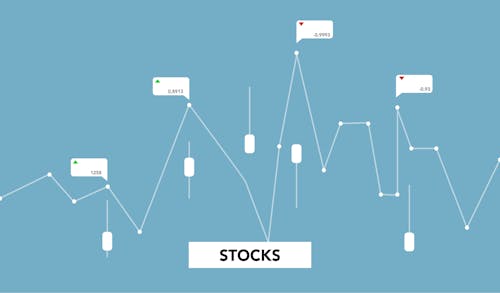When The Credit Bogeyman Crashed Wall Street’s Overcrowded Dinner Table

Image Source: Pexels
Wall Street already had a full plate this week — rare earths turning into geopolitical lightning rods, the AI trade wobbling under bubble whispers, a government shutdown choking off vital data flow, and a labour market flashing early warning lights — all while stocks sit perched at the highs of the year, fat and complacent. The Street’s been dining on rate cut and AI optimism for months, but this week the waiter brought something no one ordered: the return of the credit bogeyman.
Zions (ZION) and Western Alliance (WAL) took turns flipping open the trapdoor beneath the market’s confidence. Zions confessed to a $50 million charge-off tied to dubious commercial loans from its California arm, while Western Alliance revealed one borrower failed to deliver the promised collateral — finance code for “fraud.” Both had exposure to the now-defunct First Brands, the same auto-parts borrower that detonated JPMorgan (JPM) and Fifth Third’s (FITB) subprime portfolios last month. Suddenly, the déjà vu from the 2023 regional bank tremor didn’t feel so distant.
The timing couldn’t be worse. AI exuberance is being questioned; now, under the hood, the credit system is misfiring. Regional bank shares cratered, gold ripped through $4,300, and yields dropped as traders were again forced to rediscover the definition of “flight to safety.” When bond yields and stocks fall together, it’s not a bull market — it’s time for the bunker.
Jefferies (JEF), caught mid-presentation at its investor day, lost 11% as its involvement in the First Brands mess came under fresh scrutiny. Analysts repeated the old refrain — “isolated events” — but the market has heard that song before, and it rarely ends on a high note. These “one-offs” are starting to rhyme, and that’s what unnerves pros: not the numbers, but the pattern.
This isn’t a systemic collapse — at least not yet — but it serves as a reminder that in late-cycle markets, credit risk doesn’t disappear; it simply hides until liquidity starts drying up.
You can feel it in the tone of the screens — not panic, not yet — but that twitchy hum traders get when the market starts whispering in frequencies only the battle-scarred can hear. Something’s off in the plumbing. The pipes that keep the world’s largest financial machine lubricated are rattling again, and the Fed’s emergency repo hose — that quiet valve nobody talks about until it bursts — just spiked to levels not seen since the pandemic. Gold Ascends as Markets Spin Their Own Tale of Nerves and Nonsense
The Street’s been busy debating AI valuations, tariff politics, and Fed timing — but in the background, leverage is quietly corroding. The ghosts of Tricolor, First Brands, and now Zions are all whispering the same warning: the age of cheap credit may be gone for a while, and its hangover is beginning to seep through the equity market’s grin.
Meanwhile, the Fed sits center stage, ready to cut rates to soothe a slowing economy — but those cuts may now be interpreted less as “insurance” and more as “containment”. Rate relief helps duration and stocks, not delinquency. Once credit quality starts to crack, the problem shifts from the yield curve to the balance sheet.
If there’s a metaphor for the moment, it’s this: the Street’s banquet table is over-served — rare earth tariffs, stretched AI valuations, government shutdown, jobs market worries, and now fraud-flavoured credit risk. The lights are flickering, and the cockroaches are back. Traders know the drill. When gold shines this bright and regional banks start whispering “loss recognition,” you don’t reach for dessert — you look for the exit.
Because in credit, as in life, the monsters don’t hide under the bed. They hide in the footnotes.
More By This Author:
Gold Ascends As Markets Spin Their Own Tale Of Nerves And Nonsense
Roulette Markets And The Dovish Dealer At The Fed’s Table
The TACO Trade Reheated — Markets Bite Back As Trump Keeps The Menu Open



